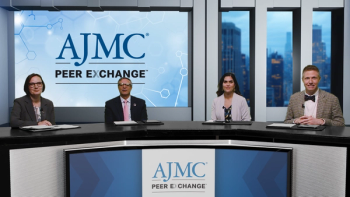
Panelists discuss how treatment strategies differ between transplant-eligible and transplant-ineligible multiple myeloma patients, with transplant eligibility determined by functional status rather than age alone, and how quadruple therapy regimens are increasingly used for transplant-eligible patients to achieve deep, durable responses.




